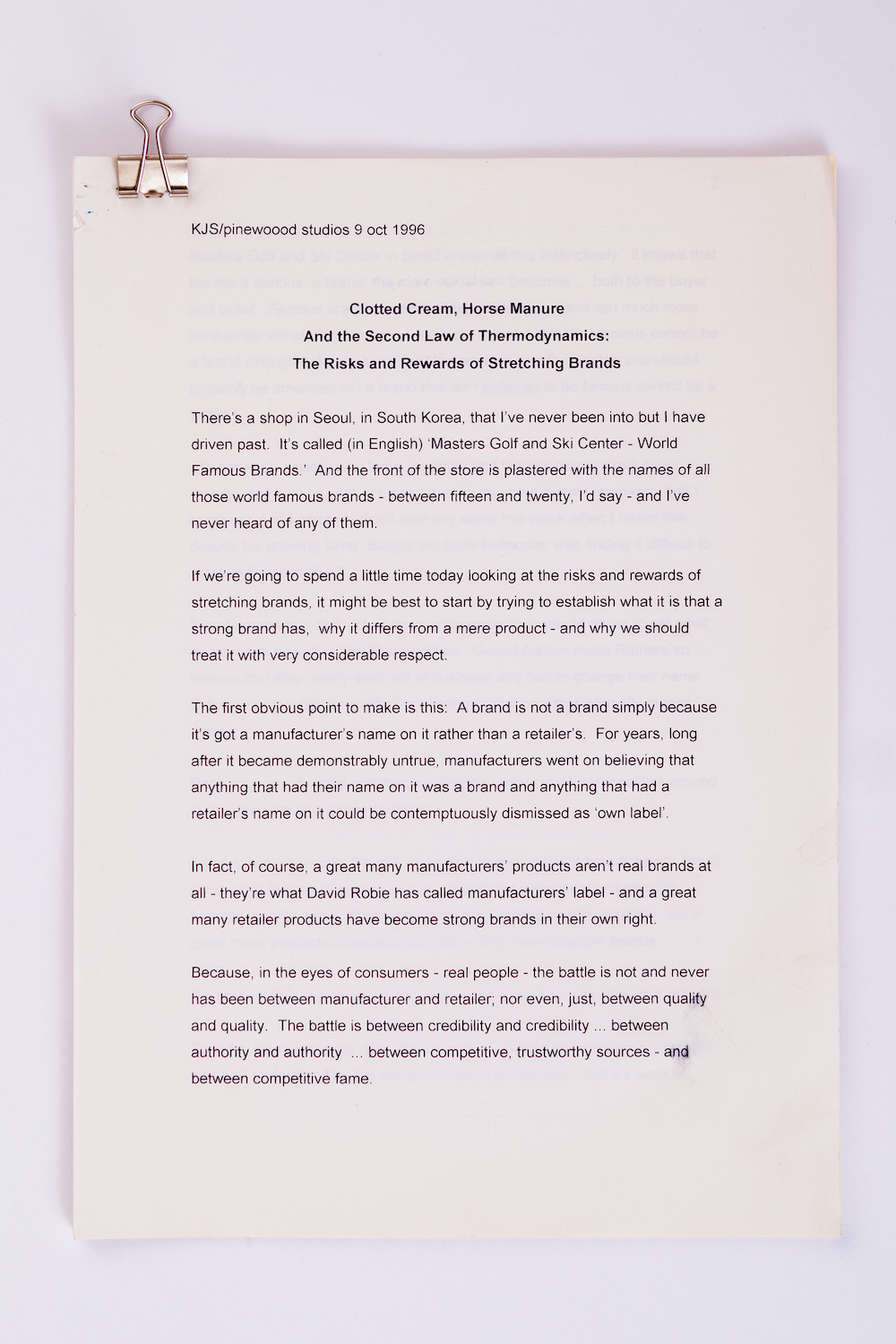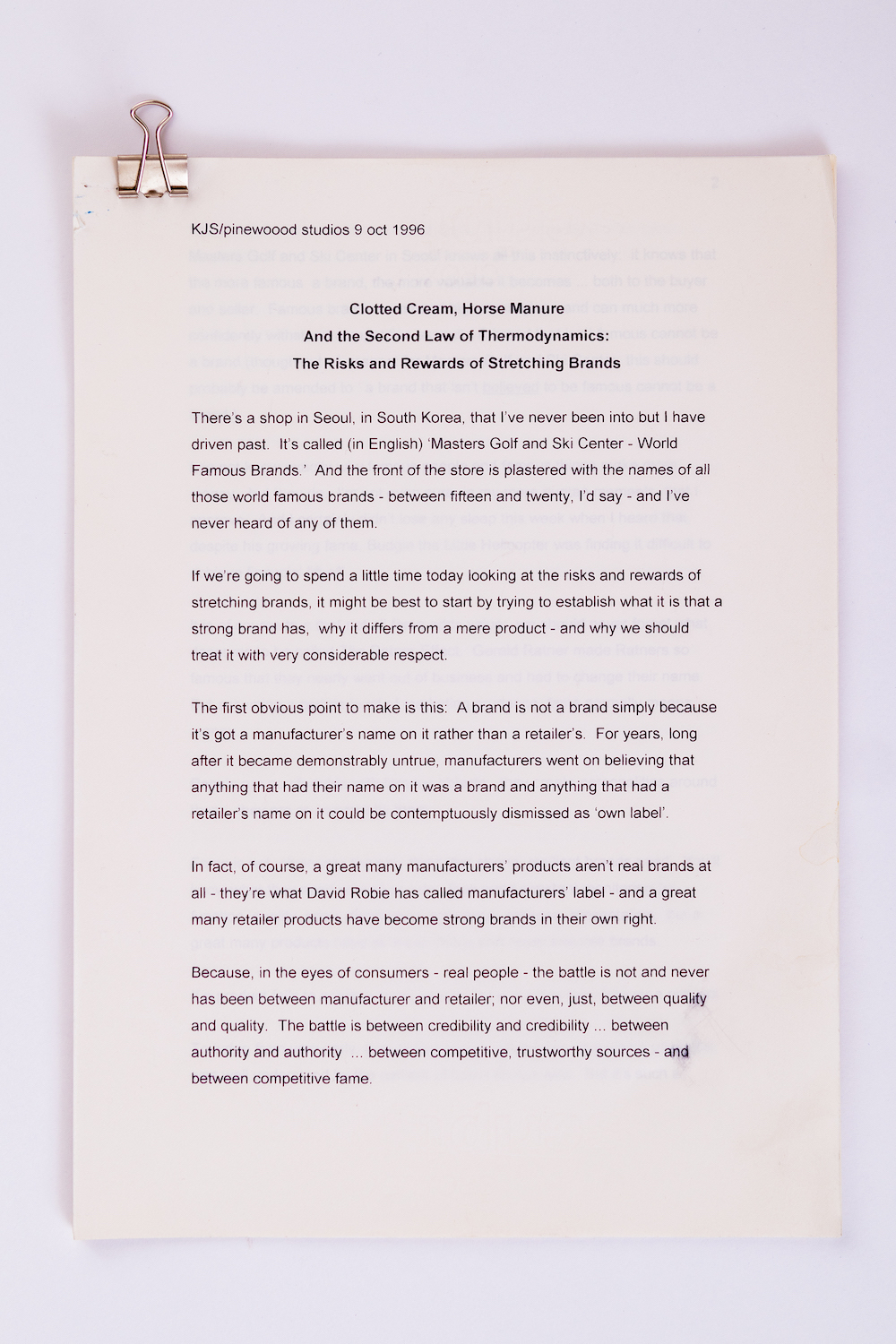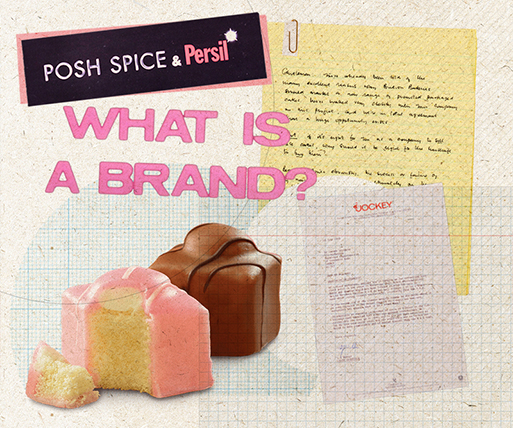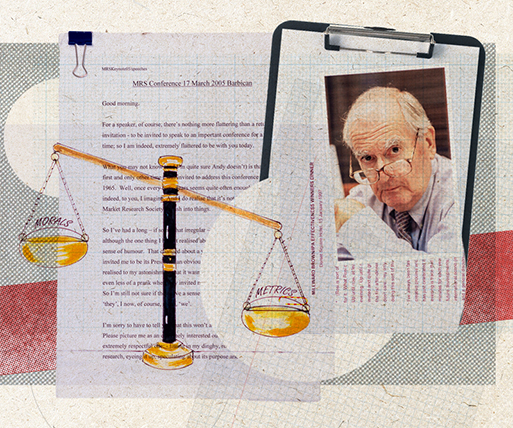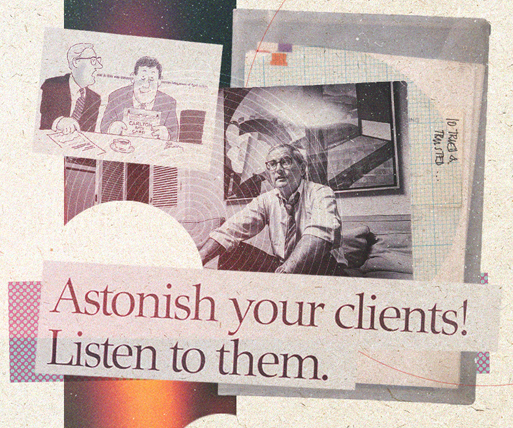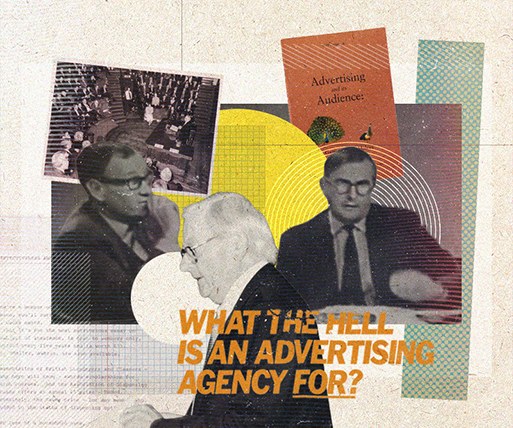The risks and rewards of stretching brands, 1996
- Date: 1996
- First delivered: Kraft Jacob Suchard conference, Pinewood Studios
- BRANDS
At a time when, for cost reasons, fewer and fewer free-standing brands were being launched, and more existing brands were being asked to foster sub-brands, Jeremy suggests that brand owners might be “putting at risk much more than the money you think you’re saving”. He explores brand authority, fame, relevance and the language of brand stretching: “Even to talk about stretching a brand implies the inevitability of dilution.”
Clotted Cream, Horse Manure And the Second Law of Thermodynamics:
The Risks and Rewards of Stretching Brands
There's a shop in Seoul. in South Korea, that I've never been into, but I have driven past. It's called (in English) 'Masters Golf and Ski Center - World Famous Brands.' And the front of the store is plastered with the names of all those world-famous brands - between fifteen and twenty, I'd say - and I've never heard of any of them.
If we're going to spend a little time today looking at the risks and rewards of stretching brands, it might be best to start by trying to establish what it is that a strong brand has, why it differs from a mere product - and why we should treat it with very considerable respect.
The first obvious point to make is this: A brand is not a brand simply because it's got a manufacturer's name on it rather than a retailer's. For years, long after it became demonstrably untrue, manufacturers went on believing that anything that had their name on it was a brand and anything that had a retailer's name on it could be contemptuously dismissed as 'own label'.
In fact, of course, a great many manufacturers' products aren't real brands at all - they're what David Robie has called manufacturers' label - and a great many retailer products have become strong brands in their own right.
Because, in the eyes of consumers - real people - the battle is not and never has been between manufacturer and retailer; nor even, just, between quality and quality. The battle is between credibility and credibility ... between authority and authority ... between competitive, trustworthy sources - and between competitive fame.
Masters Golf and Ski Center in Seoul knows all this instinctively: it knows that the more famous a brand, the more valuable it becomes ... both to the buyer and seller. Famous brands command higher margins - and can much more confidently withstand competitive assault. A brand that isn't famous cannot be a brand (though out of respect for Masters Golf and Ski Center, this should probably be amended to 'a brand that isn't believed to be famous cannot be a brand’.)
I do not know exactly why famous people and famous things make more money - but they do. I'm not even sure, in my more puritan moments, that I approve. And I certainly didn't lose any sleep this week when I heard that, despite his growing fame, Budgie the Little Helicopter was finding it difficult to achieve financial lift-off.
It is of course true that not all fame adds value: we should never forget what deserves to be called The Ratner Effect. Gerald Ratner made Ratners so famous that they nearly went out of business and had to change their name. But assuming a certain level of marketing prudence, fame normally means money.
People are comfortable with famous objects; they create personalities around them; they are re-assured by them.
Fame is not, obviously, the only thing that strong, resilient brands need. You'll know what they need as well as I do: they need constant monitoring for function, quality, price. distribution, relevance, salience, presentation; but a great many products have all those things and never become brands.
If a product fails to achieve some form of fame, it will remain forever a product.
To judge from very early, turn-of-the-century advertising, this was a point that was well understood by the earliest of brand enthusiasts. But it's such a fundamental, primitive and unsophisticated point that today it often gets forgotten.
We talk about niche-marketing and targeting and the elimination of waste: but one of the requirements of brand fame, I think, is that it should to some extent be indiscriminate: by which I mean, that there is a value to a brand in being known by, and familiar to, even those people unlikely to buy or use it.
Of the millions of people who know about Madonna, perhaps one per cent will ever go to one of her concerts and perhaps five per cent buy a record. Yet the value to Madonna and her brand managers of that other 95 per cent is invaluable. We modern sophisticated marketing experts may wince at the thought - but there are simple things that we seem to have forgotten and that deeply unsophisticated publicists seem to understand instinctively.
And the other thing to remember about strong brands is that, like the rest of the world, their natural state is one of decline.
It happens so slowly that we can choose to ignore it: but the bleak truth about our physical world is that it doesn't stand still: it's in a constant state of running down, of getting colder.
That is the natural state of things. And that is the natural state of brands.
The relationship of the buyer and the user to the brand can be an immensely complicated one. And the more closely you examine it, the more complicated it gets - and the harder it becomes to know what to do with all the insights and knowledge that we've now acquired.
I believe that the value that strong and famous brands have to their users can usefully be seen as a sort of warmth. People can cup their hands around them and - like cats on a boiler - enjoy being close to them.
And given that the natural state of brands is a slow but constant cooling, it follows that the primary job of every generation of brand management is to recognise their brands as night-storage heaters, constantly needing their brand warmth to be at least maintained and at best enhanced.
Brand warmth - brand fame - can be created and maintained in a great many ways. Advertising agencies tend to think that advertising does it best and they're often right.
Adidas has been a famous brand for thirty years or more - but not through advertising.
Year after year, the great fashion-houses design and display extremely expensive clothes that no-one wears: but by doing so, they generate great and potent fame for their equally expensive perfumes. And people do buy those - in extraordinary quantities and at extraordinary prices. The great fashion houses know a lot about the value of fame and its relationship to profit margins.
Major retailers, by their very nature, can achieve and maintain brand fame without much advertising.
Branson and Virgin have done it through PR, lawsuits, advertising, direct marketing and hot air-ballooning across the Atlantic.
And as soon as sponsorship stops meaning free seats for directors at Old Trafford or Covent Garden and starts to be taken seriously by marketing people, its contribution to the creation of brand warmth will soar.
So that's the analogy, that's the metaphor - that's the model - that I 'd like you to hold in your heads about long-term, profitable brands.
Their value lies in a kind of warmth; their natural condition is one of gradual cooling; and the key responsibility of the brand owner, every year, day-in-day out, is to compensate for this natural decline and keep brand temperature up.
Now then, let me remind you about the Second Law of Thermodynamics. CP Snow drew it to our attention some forty years ago and I expect you're all physicists and recite it to yourself every night at bedtime. But in case some of you have allowed your knowledge of this great law to become a little rusty, let me tell you what, as I understand it, it's going on about.
What it says is roughly this. When two objects touch, and their temperatures are different, heat will flow from the warmer to the cooler until their temperatures are equalised.
So [shows film] we start with a good hot object like this on the left and a cold one on the right. And as soon as they begin to touch ... the heat begins to flow from the hotter to the cooler … until the cold one's warmed up and the hot one's cooled down. And we're left with two equally lukewarm objects.
Which seems to me to be a very good prompt for starting to talk about the risks inherent in stretching brands.
As we all know, fewer and fewer free-standing brands are being launched - and we all know why. It's too expensive. More and more, existing brands are being asked to foster sub-brands - and we all know why. It's cheaper.
Or to be a little more accurate, we can convince ourselves that it's cheaper.
But of course, it very often isn't.
Because, whenever we launch a sub-brand or a brand extension or a variant, what we are quite deliberately and consciously setting out to do, at least at the beginning, is to appropriate some of the capital warmth of a brand that we've already created - or more probably inherited.
Whenever we ask a master brand to add its lustre and authority to sub brands, line extensions and variants, we are quite knowingly setting out to drain it of some of the very warmth that made it of value to people in the first place.
The Second Law of Thermodynamics will ensure that brand temperatures between master-brand and sub-brand begin to equalise; and so the master brand, the source of all our market strength, our resistance to competition, our strongest card against the retail trade and our most reliable profit contributor, loses some - and perhaps much - of its priceless heat.
And what have we gained? A few more unit sales? A bit more shelf space? A mini-step towards this year's volume sales target?
I have not the slightest doubt that the Second Law of Thermodynamics applies at least as inexorably to marketing as it does to physics.
It might go something like this:
If any two objects are presented in association to consumers, and one of the objects is thought to be of lower value than the other, then the object with the higher value will be diminished.
And here is my evidence: [Cue film showing clotted cream and horse manure, side by side.]
You are now consumers - being presented with two items either of which, separately, you might welcome. Logically, rationally, it makes excellent sense for the retailer to present them together. But being consumers, you are not logical and rational. You allow (perhaps even encourage) your response to the one to invade your response to the other.
And all I ask you to concede is this: that some consumers (though not you, of course) when looking at that sign, might be less prepared to buy the clotted cream because of its association with the second product on offer.
You have just taken part in the world's first, live, interactive experiment into the marketing equivalent of the Second Law of Thermodynamics.
And that's the risk - certainly the major risk - in setting out to maximise your brand franchise, or leveraging your brand equity or whatever phrase you like to use. I simply ask you to remember that, whatever euphemism you reach for, when you do any of these things, you are putting at risk a great deal more than the money you think you're saving.
And if that was all there was to it, then advice on brand development would be easy enough to give: Don't do it. Leave the strong ones alone and build new ones.
But that's no good, and you know it.
I've already said that the marketing battle of the future is going to be - even more than in the past - a battle between competitive authorities ... between credibilities ... between respected, trusted sources.
Identifying your brand or company's core strength, authority or expertise and developing it is just about the only sensible way forward. It's extremely difficult, it's full of risk and it will differ wildly from enterprise to enterprise. But I think there are some key questions, some rough and ready guidelines and a few techniques that can help a bit. Most of them are obvious, most of them you do, most of them are serious. But one or two are more like games - and none the worse for that.
Unless you know what your brand stands for, it's going to be impossible to develop it further - and I include corporate brands here, because the principles are exactly the same, even if the options open to a corporate brand are even more bewildering than those for a product-brand.
Fifteen years ago, where did Dunhill's authority lie? In smoking? In tobacco? They thought not: they thought it could lie in classiness. The bleak future for smoking products will have steered them, of course: but to go from tobacco to tailoring can't have been all that obvious. It's done them very well indeed.
It was this sort of understanding that encouraged Marks & Spencer to venture into financial services. Because their key component wasn't fresh food or boxer shorts: it was trust.
But I bet you they don't call it stretching the brand. And I think that's where vocabulary is important.
Even to talk about stretching a brand implies the inevitability of dilution: the question in everyone's mind seems to be: just how far can this elastic be stretched before it finally snaps?
Whereas a far better question to ask is this: We know this brand is already respected for its honesty or its frivolity or its understanding of children or its sense of style: so how can we, at a profit, provide the consumer with still further evidence of that quality?
Branson and Virgin seem to have identified their core constant as being the perennial David fighting a whole, wonderful variety of Goliaths: British Airways, Coca-Cola, banks and building societies - and so on. Every time they embark on another selfless crusade on behalf of the underdog, they further nourish this core belief. It's a brilliant strategy, because even the occasional inevitable failure will be seen as noble.
When wondering how to extend your brand, I encourage you to play a game call Brandicide.
The rules are simple. Stop wondering how you can get more from the brand that you have and start speculating how, through brand extension, you could most decisively kill it. This means that you must identify a new product, with a potentially legitimate place in the market, that would not just dilute its parent's brand values but destroy them for all time. It's not as easy as it seems.
We tried a test run on After Eight, I remember: and were quite pleased when we came up with After Eight chewing gum. But on reflection, we thought it wasn't such a good idea after all - or rather, it was quite a good idea - because there well might be, in these anti-smoking days - a genuine opportunity for an up-market, sophisticated gum: and if so, After Eight would be exactly the right brand to give it legitimacy. We were a lot more pleased when somebody
came up with After Eight bubble gum. Everybody felt that brandicide had been successfully committed.
I recommend Brandicide. It's fun to play tor all the family: it gets you out of deeply rutted thinking patterns - and it helps a lot when you're trying to isolate just what it is that your brand really stands for.
People trust specialist, focused brands. If you've got a specialist brand, nurture it. But of course, some brand managers hate specialist brands because of the restrictions they suffer from. So they start extending the brand's franchise and turn it from the bedtime drink into the mid-morning and bedtime drink and then into the anytime drink - and then wonder three years later why it's suddenly becomes the no-time drink. A specialist, focused reputation may be restricting - but it's extremely powerful and can last a lifetime.
You of all companies should remember the tale of the three custards.
The first instant custard came from Brown and Poulson and it did very well; until another instant custard came along from Batchelor's; which did very well
- until the third instant custard came along, from Bird's: which wiped the floor with both of them.
People like, trust, remember, have faith in specialist brands. It's one of the few great advantages that manufacturers' brands have over retailers' brands.
Another game worth playing is an Edward de Bono game called the Intermediate Impossible. You're looking for a brand extension (or rather, I hope, you're looking for an extension that will still further enhance the reputation of the master brand). Let us say that the master brand is, to take an example at random, a coffee.
Your Intermediate Impossible ls that your brand extension should be something that can be neither eaten nor drunk.
This is not quite as stupid as it seems. Again, you're forced to think beyond the obvious and the predictable: to look for a core brand value which is bigger and more conceptual. By the time you return to the coffee (which you're eventually allowed to do) you'll have enjoyed a much more adventurous and profitable exploration of options that you would have done otherwise; and you'll have a far clearer idea of your brand's core values.
And there's another quite salutary question you can ask: but it has to be asked of yourself in private and answered with the utmost honesty.
You are about to recommend the introduction of a brand variant or a brand extension. You are pretty certain that it will help you achieve some significant volume gains in the forthcoming fiscal and help you meet your targets.
The question you ask yourself is this: if you were suddenly told that you were going to remain profit responsible for that brand for another ten years - would your recommendation still stand?
But at the heart of all considerations about brand extensions lies the question of authority, fame and the second law of thermodynamics.
Rather than asking how you can spread your master brand's authority a little thinner and get away with it, ask how you can enhance your master brand's authority. You need to do that anyway, because it's getting cooler all the time and unless you do something, it will peter out completely like some expended meteorite.
When Madame Tussauds introduce new brand extensions, they don't talk about stretching the brand: they ask themselves what would give visitors even more pleasure? And only then do they ask themselves how much it would cost and how much people would be prepared to pay for it. It's a good way of looking at things.
Because the real lesson, of course, of the second law of thermodynamics is this: your brand extension will almost certainly start colder: will almost certainly need to draw warmth and support from the master brand itself. That's because it's new, untried and unknown. But if you've chosen well, and the brand extension has real and relevant appeal, then it shouldn't be long before it acquires its own warmth. And if you've got it really right, it may even begin
to contribute, as the temperatures equalise, and breathe new life and new warmth into its ageing parent.
And that's certainly something that all we ageing parents fervently hope their offspring will do.
